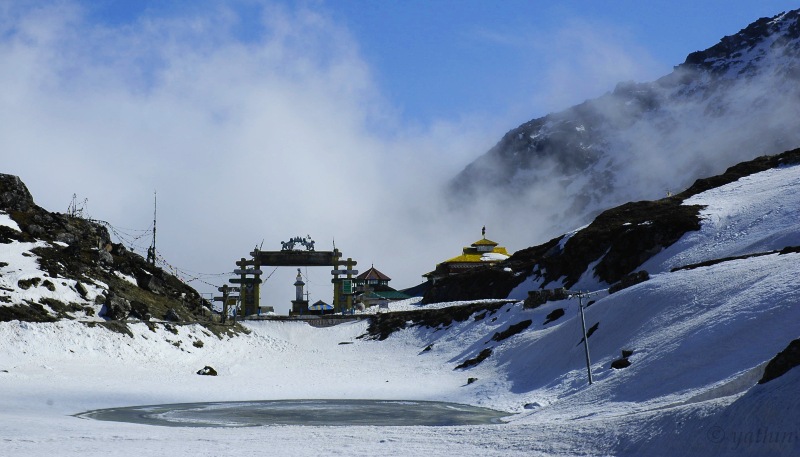
Tawang incursion: What China wants and why it's no minor incident

The latest border clash between Indian and Chinese armies near Yangtse in Arunachal Pradesh’s Tawang sector has raised temperature ahead of the next round of talks to defuse the military standoff in Ladakh. Military sources provided some details about this clash on December 9 — the first since the July 2020 clashes at Ladakh’s Galwan Valley.
Unlike Galwan, where 20 Indian soldiers and an unspecified number of Chinese troops died, the December 9 Yangtse clash led only to broken limbs and not blood.
The importance of Yangtse
This clash followed PLA (People’s Liberation Army) incursion into a very strategic area the Chinese have eyed since the 1986 standoff following Gen. K Sundarji’s Operation Chequerboard, which exposed the weakness of the Chinese Li Camp and other fortifications around it.
Former Indian commanders, who have experience in the area, say if the Chinese can take over Yangtse, they can threaten Se La (or Sela pass) directly and cut off Indian positions in Tawang and Bum La with ease. So, for the Chinese, Yangtse is a prized objective, both for defensive and offensive reasons. They need to deny Indian Army the Yangtse heights to avoid a threat to the Li Camp, which now houses a brigade (as opposed to a battalion in the late 1990s), but also value it, for it can give them easy access to Se La.
Also read: Tawang clash: Oppn walks out after Rajnath address; fighter jets deployed at border
So, the latest Chinese incursion into Yangtse cannot be taken lightly, though some TV panellists have dismissed it as a “minor clash”. The fact that the problem was sorted out at the local level was because the Indians took strong counter-measures and mobilised in strength and could even detain a few PLA soldiers. To secure their release, the Chinese local commanders sought immediate flag meeting and, by agreeing to return them, the Indians managed to bury the hatchet for the time being.
Clash was significant
But LAC veterans who have dealt with the Chinese for a long time believe that the continued interest the Chinese have retained for Yangtse in view of its strategic importance itself makes the clash significant for several reasons.
One, the Chinese tried to cross the LAC to demolish Indian bunkers and fortifications to test the level of alertness Indian troops maintain in deep winter, when temperatures run several degrees below zero. The Indian Army admitted these positions were unoccupied, meaning the Indian troops had dropped behind due to climate and logistics reasons. And the fact that they responded strongly proves these fortifications were within the Indian claim line.
Second, their December 9 incursion at Yangtse indicates the Chinese are prepared not to localise the standoff to Ladakh alone, but stretch it to all sensitive points on the LAC. Ahead of the next round of Ladakh talks at the corps commander level, they are clearly trying to create fresh pressure points, both to keep the Indian Army in a spin (about the next incursion) and also to create some bargaining chips.
Third, this incursion could also be a capability display exercise ahead of the next round of Ladakh talks, meaning that the Chinese are seeking to drive home the message that they can always intrude at will anywhere along the LAC despite high-level all-weather deployment of Indian Army and that the Indians can only play catch-up.
Phased military assertion
Fourth, the Chinese incursion could also be linked to their angst over the ongoing Indo-US Yudh Abyas joint exercise at Auli close to LAC. Beijing has furiously protested against this exercise, going to the extent of dubbing it as “third-country interference in Sino-Indian relations.”
Watch: India-China troops clash at LAC in Arunachal, opposition corners govt in Parliament
Fifth, the Chinese eye with suspicion and are clearly uncomfortable with Dalai Lama’s long sojourns to border provinces like Ladakh and his plans for a large-scale Buddhist congregation at Bodh Gaya that is already drawing huge numbers of pilgrims from East and Southeast Asia. Beijing is wary of India playing both the Tibet card and Buddhist card.
Chinese President Xi Jinping repeatedly urging the PLA to prepare for victory in “regional conflicts” is no empty threat or mere attempt to boost his domestic image. It is part of a carefully chosen phased approach of military assertion against countries seen as a threat by China.
The Yangtse incursion should be seen from this larger perspective and not dismissed as a minor incident.
(Subir Bhaumik is a former BBC correspondent and author on South Asian conflicts)
(The Federal seeks to present views and opinions from all sides of the spectrum. The information, ideas or opinions in the articles are of the author and do not necessarily reflect the views of The Federal)

